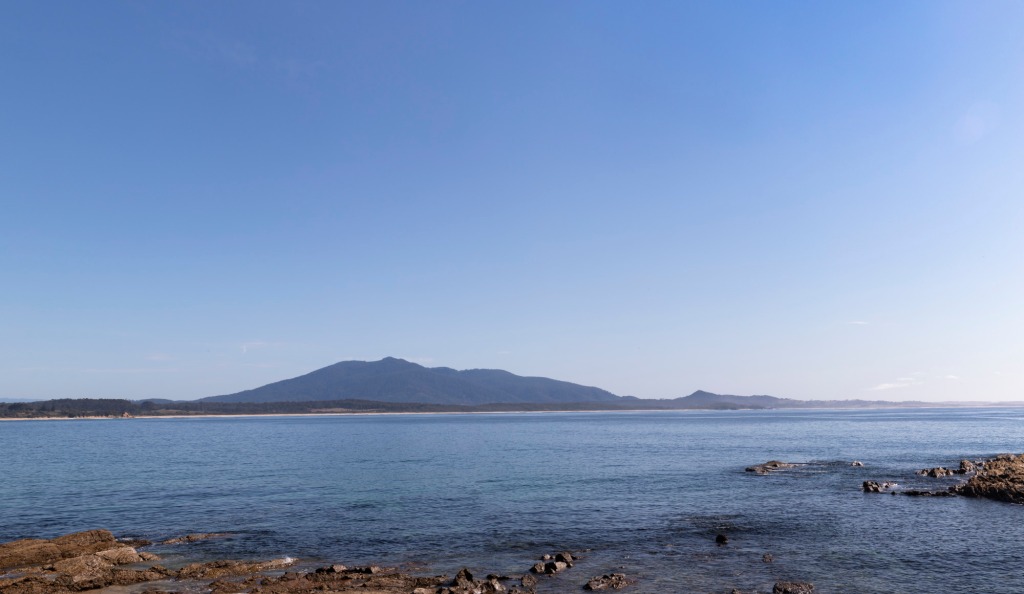A memorable and mystifying encounter
(This post supplements material in Chapter 7 of ‘Connect with Nature’)
It is an experience that left a lasting impression on me.
My wife, Margaret, and I had walked up to the rounded peak of the volcanic remnant we knew then as Mt Dromedary. At 800 metres above sea-level, the mountain overlooks part of the celebrated ‘Sapphire Coast’ of south-east Australia. Although just the core of its former majestic self, the mountain is very interesting geologically. Its humped profile prompted Captain James Cook to name it Dromedary when he saw it on his 1770 journey up Australia’s east coast.
But it already had a name, Gulaga – meaning mother mountain, given to it by people of the Yuin nation. What the Yuin people see is not a resemblance but an actual mother figure to which they trace their individual and collective origins. Without Gulaga, they would not exist. This recognition of a landscape feature as the embodiment of an ancestral (spiritual) being is universal across all of Australia’s First Nations peoples. After the creation, the ‘Dreaming’, the ancestral spirits became part of the landscape. So, for the Yuin people, Gulaga IS their mother spirit, as sacred to them as Uluru (formerly known as Ayres Rock) is to the people of the Anangu Nation. Their values, identity, spirituality and lifestyle are all intimately bound up with Gulaga. Many of their sacred sites and exclusively women or men’s places are on Gulaga. She lies at the heart of their ‘country’, the land that has been and always will be theirs.
Margaret and I knew nothing of this when we made our way up Gulaga (Mt Dromedary). After reaching the summit, we set about retracing our steps. Not far into our return journey, we reached a saddle where we spotted an unmarked narrow side-track, which we had not noticed on the ascent.
Intrigued, I set off to investigate the track with Margaret following. Quite suddenly, I came upon a cluster of extraordinary figure-like boulders. Superficially they resembled granite tors, but there was a character about them that was completely new to me.
I now know that I had stumbled onto one of Australia’s seven most significant rock formations, as recognised by Geoscience Australia (The other six include Uluru, Kata Tjuta and Wave Rock.).
Excited and awed, I reached for my camera, but stopped when I heard Margaret say something like, “Don’t take photos; this is a sacred site”. Rather than being excited by the place, Margaret was clearly apprehensive and anxious. She later told me that she felt as though she was trespassing. I had no trouble empathising with her distress, so we left, somewhat mystified by the experience.
Our perplexity increased when we learned from a brochure we obtained in the nearby town of Tilba Tilba that ‘Mt Dromedary’, was indeed sacred to the local Aboriginal (Yuin) people.
Perhaps we had been given the privilege of sharing just a little of the Yuin people’s sense of sacredness. I am reluctant, however, to make such a presumptuous claim. But I am confident to say that Margaret and I had a deeply affecting experience of awe. Awe is evoked by the unexpected, by an encounter with something that challenges an understanding or ‘model’ we have of how the world is. Such an encounter can be stimulating and exciting, as it was in my case, but it can also be threatening and frightening, as it was for Margaret. Either way, awe is powerful emotion that can make us wiser, more sociable and spiritually aware .
Note: Although I refrained from taking photos of the rock formation on Gulaga, such photos are freely available – from sources that include the Museum of Australia and locally produced tourist publications. Evidently, taking and reproducing photos of the site does not cause offence or distress to Yuin people. But if you visit Gulaga, you are asked to remain on the tracks, as there are sites elsewhere on the mountain that should be visited only in the company of a Yuin person.

